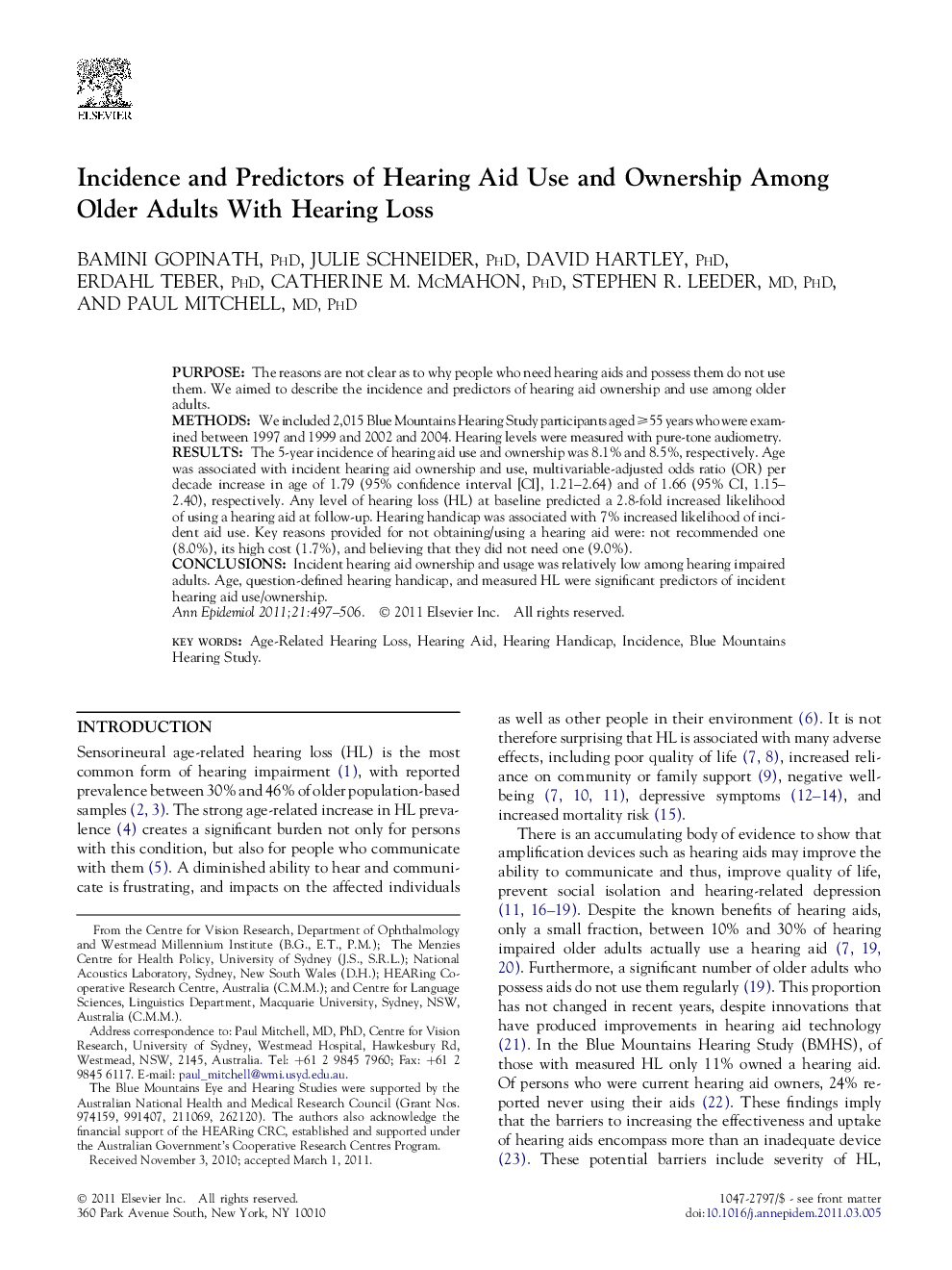| Article ID | Journal | Published Year | Pages | File Type |
|---|---|---|---|---|
| 3444478 | Annals of Epidemiology | 2011 | 10 Pages |
PurposeThe reasons are not clear as to why people who need hearing aids and possess them do not use them. We aimed to describe the incidence and predictors of hearing aid ownership and use among older adults.MethodsWe included 2,015 Blue Mountains Hearing Study participants aged ≥55 years who were examined between 1997 and 1999 and 2002 and 2004. Hearing levels were measured with pure-tone audiometry.ResultsThe 5-year incidence of hearing aid use and ownership was 8.1% and 8.5%, respectively. Age was associated with incident hearing aid ownership and use, multivariable-adjusted odds ratio (OR) per decade increase in age of 1.79 (95% confidence interval [CI], 1.21–2.64) and of 1.66 (95% CI, 1.15–2.40), respectively. Any level of hearing loss (HL) at baseline predicted a 2.8-fold increased likelihood of using a hearing aid at follow-up. Hearing handicap was associated with 7% increased likelihood of incident aid use. Key reasons provided for not obtaining/using a hearing aid were: not recommended one (8.0%), its high cost (1.7%), and believing that they did not need one (9.0%).ConclusionsIncident hearing aid ownership and usage was relatively low among hearing impaired adults. Age, question-defined hearing handicap, and measured HL were significant predictors of incident hearing aid use/ownership.
